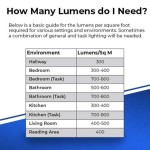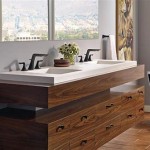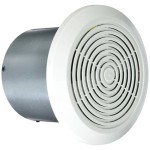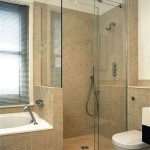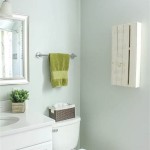The Practicality and Versatility of a 30 Inch Unfinished Bathroom Vanity
The 30 inch unfinished bathroom vanity represents a significant category within bathroom renovation and design. It offers a blend of space efficiency, customization potential, and cost-effectiveness that makes it a popular choice for a wide range of homeowners and contractors. This article will explore the advantages and considerations associated with a 30 inch unfinished bathroom vanity, focusing on its dimensions, material options, design flexibility, and installation aspects.
The selection of a bathroom vanity is a crucial decision in bathroom remodeling. It dictates the available storage, influences the overall aesthetic, and contributes to the functional layout of the space. Choosing an unfinished vanity adds another layer of complexity but also provides a unique opportunity to tailor the piece to the exact specifications of the bathroom. Understanding the nuances of unfinished vanities, particularly the 30-inch size, can empower informed decision-making.
Space Efficiency and Suitability
The 30 inch width of these vanities is particularly well-suited for smaller bathrooms, powder rooms, or en-suite bathrooms where maximizing floor space is a priority. Standard bathroom vanity sizes range from 24 inches to 72 inches or larger. A 30-inch vanity strikes a balance, providing ample storage and countertop space without overwhelming a modestly sized room. This is especially important in urban dwellings or older homes where bathrooms may be more compact.
The compact size does not necessarily equate to limited functionality. Well-designed 30-inch vanities can incorporate clever storage solutions such as drawers, shelves, and cabinet configurations to efficiently organize bathroom essentials. Wall-mounted options, also known as floating vanities, further enhance space by creating an illusion of more area and facilitating easier floor cleaning.
Furthermore, the standard depth of a bathroom vanity typically ranges from 18 to 21 inches. A 30-inch vanity usually adheres to this depth, making it a relatively sleek and unobtrusive addition to the bathroom. This allows for comfortable movement within the space and prevents the vanity from becoming a dominating feature.
Customization and Finishing Options
The primary advantage of an unfinished vanity lies in its inherent customization potential. Homeowners have complete control over the final appearance of the vanity, allowing them to match it perfectly to the existing décor or create a completely new design aesthetic. This level of personalization is rarely achievable with pre-finished vanities.
The choice of finish is extensive. Painting is a popular option, allowing for a wide spectrum of colors and finishes, from matte to gloss. Staining, on the other hand, highlights the natural grain of the wood and provides a more rustic or traditional look. The selection of paint or stain should consider the overall bathroom style and the desired level of durability. Moisture-resistant finishes are essential for bathroom vanities to prevent water damage and prolong the lifespan of the piece.
Beyond the finish, other customization options include hardware selection (knobs, pulls, hinges), countertop material (granite, quartz, marble, laminate, solid surface), and sink style (undermount, vessel, drop-in). These elements can be chosen independently to create a truly unique and personalized bathroom vanity. The cost can vary significantly depending on the selected materials and hardware, but the ability to control these variables allows for budget management.
The customization process often involves sanding the unfinished vanity to create a smooth surface for painting or staining. This preparation is crucial for achieving a professional-looking finish. Applying primer before the final coat of paint or stain is also recommended to enhance adhesion and ensure even coverage. Multiple coats may be necessary to achieve the desired color intensity and durability.
Material Considerations and Durability
Unfinished bathroom vanities are typically constructed from solid wood, plywood, or a combination of both. Solid wood is generally considered the highest quality option, offering superior durability and a more luxurious aesthetic. Common wood species include oak, maple, birch, and poplar. Each species has its unique grain pattern and hardness, influencing both the appearance and the structural integrity of the vanity.
Plywood offers a more cost-effective alternative to solid wood. High-quality plywood is less prone to warping and cracking than solid wood, making it a suitable choice for bathroom environments with fluctuating humidity levels. Plywood vanities are often constructed with a solid wood veneer to provide the appearance of solid wood while maintaining affordability.
The choice of material should consider the anticipated level of use and the overall bathroom environment. Bathrooms with high humidity levels may require materials that are specifically treated to resist moisture damage. Solid wood vanities should be properly sealed and maintained to prevent water penetration. Regular cleaning and maintenance are essential for preserving the appearance and longevity of any bathroom vanity, regardless of the material.
The durability of the vanity also depends on the quality of the construction. Look for vanities with solid joints, sturdy hardware, and well-constructed drawers and doors. Dovetail joints are a sign of high-quality craftsmanship and provide superior strength. Soft-close hinges and drawer slides enhance the user experience and prevent slamming, contributing to the overall longevity of the vanity.
The countertop material plays a significant role in the durability and aesthetic appeal of the vanity. Granite, quartz, and marble are popular choices for their durability, heat resistance, and luxurious appearance. Laminate and solid surface countertops are more affordable options that offer good resistance to stains and scratches. The selection of countertop material should consider the budget, aesthetic preferences, and anticipated level of use.
Sink styles also influence the overall function and appearance of the vanity. Undermount sinks are installed beneath the countertop, creating a seamless and easy-to-clean surface. Vessel sinks sit on top of the countertop, providing a more contemporary and visually striking look. Drop-in sinks are installed in a pre-cut hole in the countertop, offering a more traditional and practical design.
In summary, a 30 inch unfinished bathroom vanity offers a versatile and customizable solution for a range of bathroom spaces. Its space-saving dimensions, customizable finish options, and varied material choices contribute to its widespread popularity. Careful consideration of the factors discussed above allows for the selection and creation of a vanity that perfectly meets the specific needs and aesthetic preferences of the homeowner.

Maple Unfinished 30 Bathroom Vanity Sink Base Cabinet

Glacier Bay Hampton 30 In W X 21 D 33 5 H Bath Vanity Cabinet Without Top Natural Hickory Hnhk30d The Home

Hickory Unfinished 30 Bathroom Vanity Sink Base Cabinet

Unbranded Manhattan 30 In W X 18 D Bath Vanity Cabinet Only Natural Wood Mh Cab Nw

30 Ayanna Mindi Vanity With Undermount Sink Natural Signature Hardware

Vanity Base 30 Jamestown Unfinished Right Drawers

Solid Wood Bathroom Vanity 30 Inch Elegant Unfinished Vanities

Project Source Unfinished 30 In Natural Rustic Oak Bathroom Vanity Base Cabinet Without Top The Vanities Tops Department At Com

Project Source Unfinished 30 In Natural Rustic Oak Bathroom Vanity Base Cabinet Without Top The Vanities Tops Department At Com

30 2 Drawer Wood Vanity Single Sink What We Make
